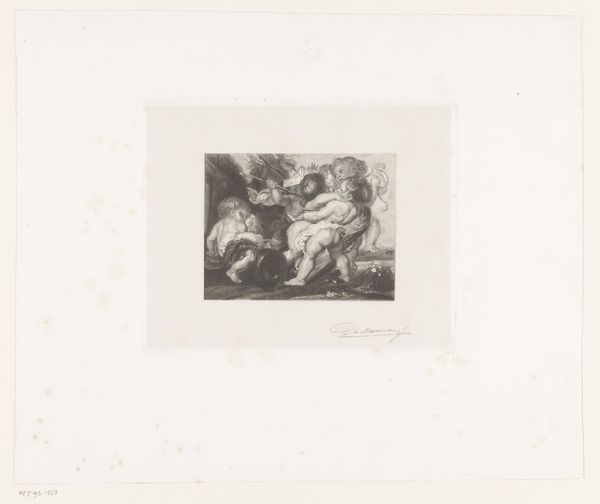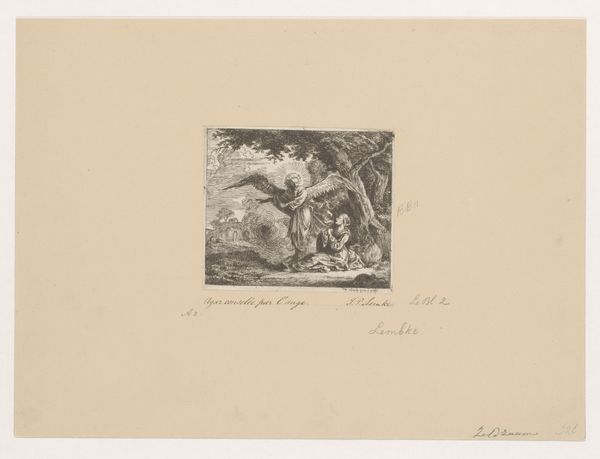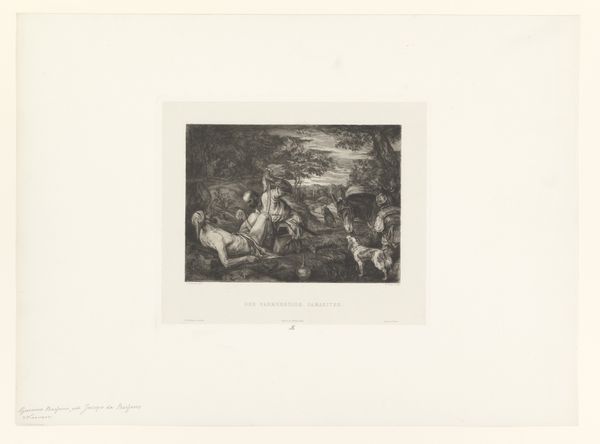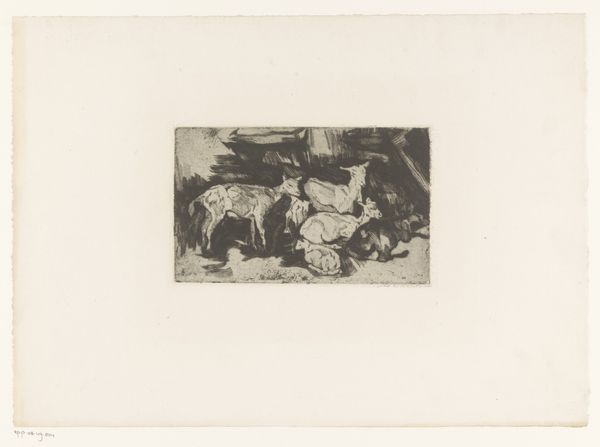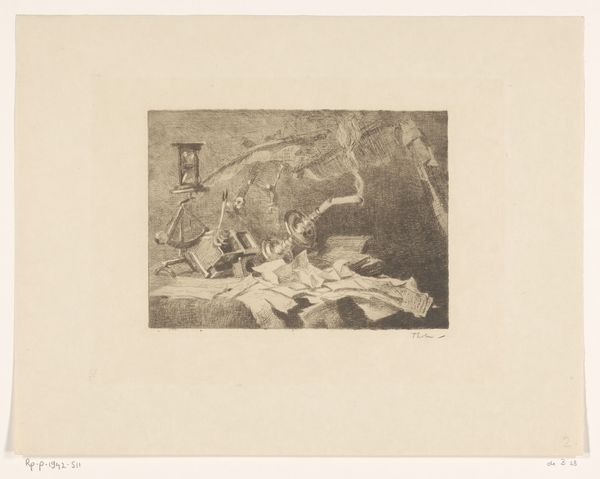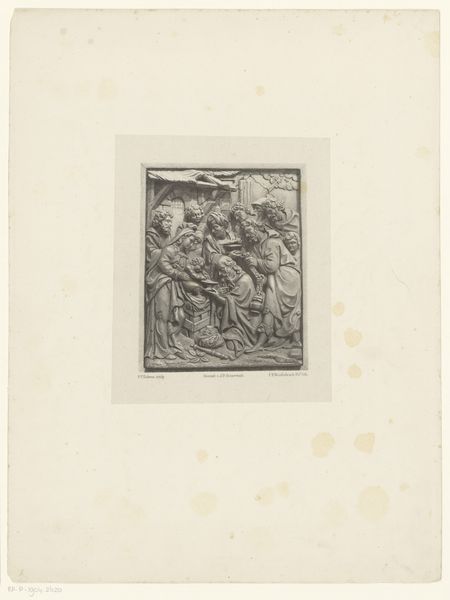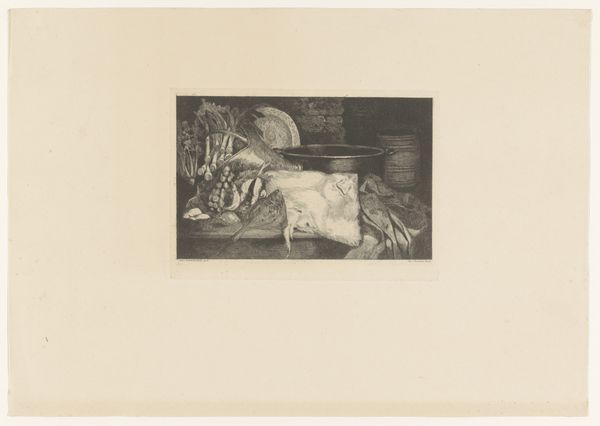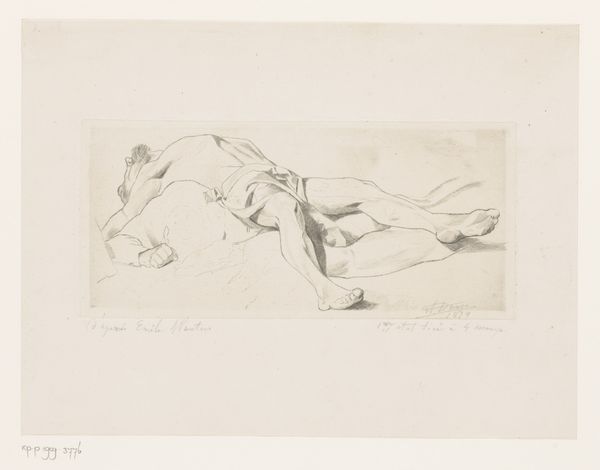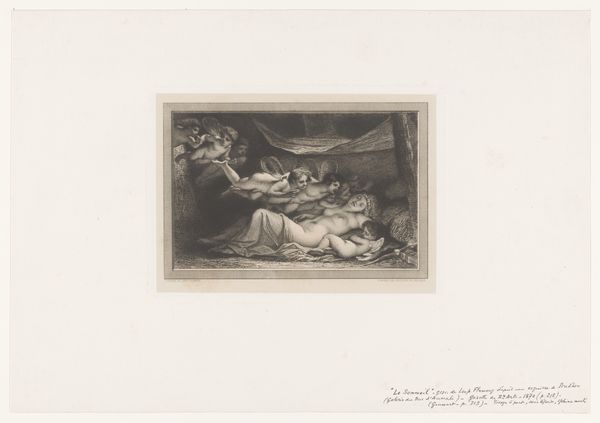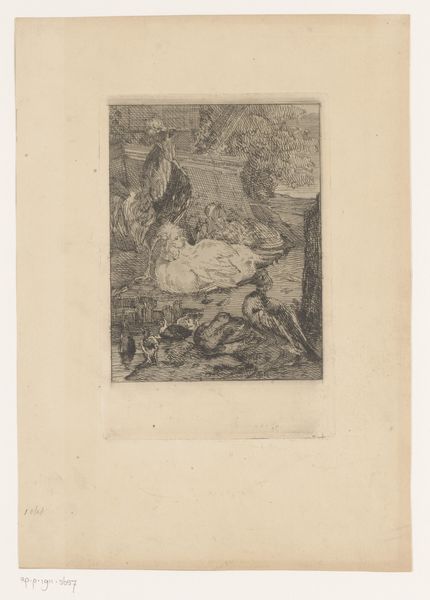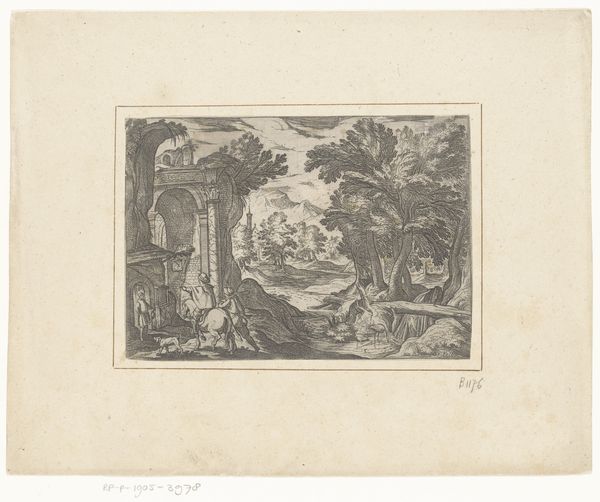
Dimensions: height 215 mm, width 278 mm
Copyright: Rijks Museum: Open Domain
Curator: Here we have Armand Heins’ “Diploma met vrouwenfiguur en putti met bloemen,” which translates to "Diploma with female figure and putti with flowers" made sometime between 1866 and 1910. Editor: It feels almost like a dreamscape, with those classical figures and a hint of Baroque flamboyance. The tonal range is very subtle, creating a muted, delicate mood, quite different from other similar works. Curator: It’s a print, executed in ink and watercolor on toned paper, with additional engraving that lends itself to subtle tonal variations, exactly. Consider, though, the role of printmaking in disseminating standardized, reproduced imagery in this period. Diplomas like these had real socio-economic value. Editor: Absolutely, and this diploma’s imagery reflects that value. We see classical figures that legitimize the recipient of the diploma. Who got these, and for what achievements? This wasn't just about art for art’s sake. It spoke to specific social and cultural hierarchies of the time. How might access to such validation have varied along lines of class, race, or gender? Curator: Exactly. Let's not forget about the labor, both intellectual and manual, involved in crafting it, especially those precise lines produced using engraving tools and methods. These are very fine techniques. One needs proper instruments, skill, and experience. How the means of its making would influence not only cost, but social perceptions and availability. Editor: And consider the space it would inhabit. Not a museum wall necessarily, but perhaps a domestic interior. In many ways, this work embodies the complex interplay between fine art and everyday life. It also prompts thinking about gender dynamics implicit within visual vocabularies that celebrate and privilege white, Eurocentric ideals of beauty and learning. How does it function as a mirror to these long gone communities and cultures, as well as a vehicle for values-transfer and perpetuation? Curator: It does provide an interesting snapshot of craft and symbolic display! A blend of skill, labor, and societal expectations. Editor: Indeed. Seeing art this way, situated firmly in its social fabric, lets it speaks to a whole range of vital human experience and aspiration, even across generations.
Comments
No comments
Be the first to comment and join the conversation on the ultimate creative platform.
